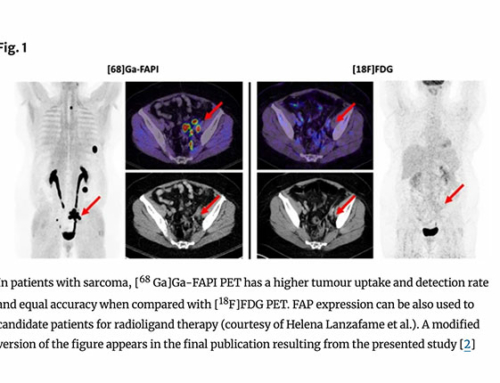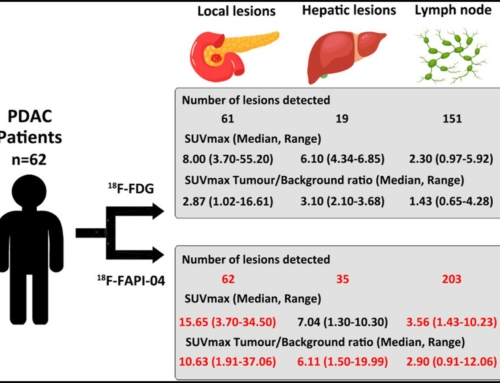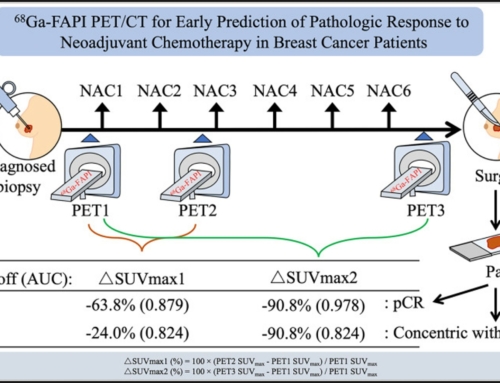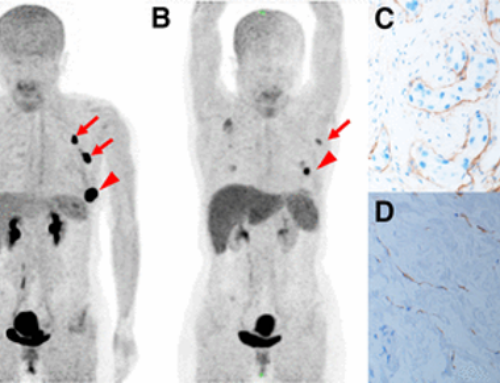Rainer Hamacher, Kim M Pabst, Phyllis F Cheung, Christoph E Heilig, Jennifer Hüllein, Sven-Thorsten Liffers, Sabrina Borchert, Pedro Fragoso Costa, Benedikt M Schaarschmidt, Lukas Kessler, Monika A Miera, Margret Droste, Merve Akbulut, Johanna Falkenhorst, Fadi Zarrad, Karina Kostbade, Ilektra A Mavroeidi, Hanno Glimm, Lale Umutlu, Martin Schuler, Daniel Hübschmann, Sebastian Bauer, Stefan Fröhling, Ken Herrmann, Jens T Siveke, Hans-Ulrich Schildhaus, Wolfgang P Fendler
Abstract
Fibroblast activation protein α (FAPα) is expressed at high levels in several types of tumors. Here, we report the expression pattern of FAPα in solitary fibrous tumor (SFT) and its potential use as a radiotheranostic target.
Methods
We analyzed FAPα messenger RNA and protein expression in biopsy samples from SFT patients using immunohistochemistry and multiplexed immunofluorescence. Tracer uptake and detection efficacy were assessed in patients undergoing clinical 68Ga-FAPα inhibitor (FAPI)-46 PET,18F-FDG PET, and contrast-enhanced CT. 90Y-FAPI-46 radioligand therapy was offered to eligible patients with progressive SFT.
Results
Among 813 patients and 126 tumor entities analyzed from the prospective observational MASTER program of the German Cancer Consortium, SFT (n = 34) had the highest median FAPα messenger RNA expression. Protein expression was confirmed in tumor biopsies from 29 of 38 SFT patients (76%) in an independent cohort. Most cases showed intermediate to high FAPα expression by immunohistochemistry (24/38 samples, 63%), which was located primarily on the tumor cell surface. Nineteen patients who underwent 68Ga-FAPI-46 PET imaging demonstrated significantly increased tumor uptake, with an SUVmax of 13.2 (interquartile range [IQR], 10.2), and an improved mean detection efficacy of 94.5% (SEM, 4.2%), as compared with 18F-FDG PET (SUVmax, 3.2 [IQR, 3.1]; detection efficacy, 77.3% [SEM, 5.5%]). Eleven patients received a total of 34 cycles (median, 3 cycles [IQR, 2 cycles]) of 90Y-FAPI-46 radioligand therapy, which resulted in disease control in 9 patients (82%). Median progression-free survival was 227 d (IQR, 220 d).
Conclusion
FAPα is highly expressed by SFT and may serve as a target for imaging and therapy. Further studies are warranted to define the role of FAPα-directed theranostics in the care of SFT patients.






